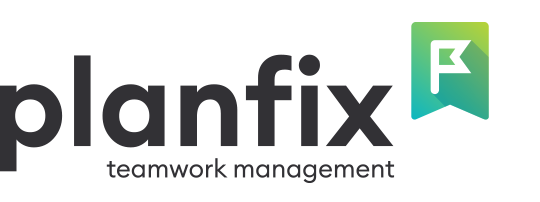
Does your team ever miss out on important emails or scramble to reply to customer requests? When this happens to often, you might wake up one morning to find out all of your customers have gone to your competitors. But don’t worry, there’s a solution: a classic CRM system (Customer Relationship Management) system that’s fully integrated into Planfix and that can help you you and your team better keep track of all those crucial client communications.
Types of CRM Systems
If you’ve ever dabbled in the world of CRM systems, you know that there are all sorts of different options out there. Of course, each of these systems has its own set of unique features. Depending on your goal, you can choose a CRM system that focuses only on projects, or one that optimizes everything from customer interactions to your internal workflows. Here are some of the most common types:
- Sales CRM – This type of system helps manage and optimize your sales team.
- Customer Service CRM – These are systems designed for customer support and service management. They most focus on automating customer interaction.
- Project CRM – Project CRMs combine the benefits of project management with customer relationship management.
- Knowledge Management CRM – These are systems designed to organize and manage the process of knowledge collection and sharing within a company.
- Social CRM – Social CRMs are built for managing communication strategies with customers through social media.
- Customer Loyalty Management – As the name implies, these are business systems designed to manage customer loyalty.
Whatever their specialization, CRMs can make running a business much easier. However, the real trick is finding the one that fits your unique business goals.
What is a Classic CRM System?
First things first: a CRM system is software that helps you manage your customer relationships. It tracks every interaction, from the first hello to repeat purchases (and even provides post-purchase support). The main goal of a CRM is to streamline customer management, increase sales, and improve service. In fact, a good CRM can supercharge both customer loyalty and business growth.
How to Choose the Right CRM System
Choosing a CRM system can feel like buying your first home— you want something that not only fits your needs, but that can grow with you and your family. Here’s a simple guide to help you find the perfect CRM for your business:
- Determine your business goals. What do you want to achieve?
- List key tasks. Which processes will be transferred to the system?
- Plan structure and relationships. How will teams and departments work together?
- Decide on essential features. What can’t you live without?
- Check for integrations. Make sure it works well with your current tools.
- Check scalability and adaptability. Can it grow with you?
- Look at the pricing. Make sure your new tool fits your budget.
Still trying to figure it out? We have some good news – we’ve done some legwork for you! In fact, you can check out our comprehensive list of the TOP CRM Software Tools and Systems in 2024 to help narrow your choices.
What Benefits Does a CRM Offer Your Company?
Introducing a CRM is about more than just keeping track of customer data. If used properly, it can open the door to greater efficiency, better workflows, and more automation. For instance, the right CRM can:
- Help you understand your customers better (no more guessing games).
- Increase sales (who doesn’t want that?).
- Improve team collaboration (because we all love a smooth process).
- Help your business grow (without losing control).
- Speed up internal communication (no more waiting days for an email response).
- Secure customer data (keep those hackers at bay).
- Improve reporting and data visualization (make sense of those numbers).
- Centralize and organize information (put an end to scattered spreadsheets).
- Automate repetitive tasks (save brainpower for more important things).
- Seamlessly integrate with other systems (because no one has time for manual data entry).
And these benefits are just the tip of the iceberg! in fact, if you want to dive deeper into the benefits of CRM customization and integration and , check out this article: What Are the Benefits of a CRM?
How to Set Up a CRM System in Planfix
Setting up a CRM system may sound like a big task, but with the proper steps, it’s a piece of cake. Here’s a closer look at the process.
- Map out the customer journey. This allows you to get a better understanding of how your customers interact with your company from start to finish.
- Define your business processes.
- Customize Planfix to your needs.
- Import your customer data. This ensures you start off with all your existing data in one place.
- Integrate tools and automate processes.
- Add users and set permissions.
If you follow these steps, you’ll have a CRM system that works like a dream in no time! Now, let’s look at those steps in a little bit more detail.
Map Your Customer Journey
Before you start setting up your CRM customization, you need to understand how your customers interact with your company. What does their journey look like? What happens between the initial inquiry and closing the deal? This journey map will help you determine where CRM can step in and do the work for you.
Define Your Business Process
Every business is unique. For instance, how do you handle leads, deals, and employees? You’ll want to take the time to define this process before you transfer everything to Planfix. The better you know your workflow, the smoother your digital transition will go.
Customize Planfix for Your Business
Don’t be afraid to get creative with Planfix. We’ve made it easy for you to set up CRM custom fields, customer cards, workspaces, and more to track the most important details. Whether it’s customer orders or team workflows, you’ll have everything under control.
Import Customer Information
With your structure set, it’s time to transfer customer data into Planfix. When you’re done, you’ll be able to store all your info in one place to access it at the touch of a button. No more hunting through multiple systems!
Integrate Your Tools and Automate Manual Processes
Planfix works with a wide variety of tools — messengers, email, or the CRM you choose. You can even automate tasks that used to take too much time. Imagine that – all your favorite tools in one place!
Add Users and Set Permissions
We know collaboration is key! That’s why Planfix allows you to give specific access to team members based on their roles. Need someone to see customer data but not internal files? No problem. You’re in control.
Example: How to Set Up a CRM in Planfix
Maybe you want to set up a classic CRM for processing customer requests. First, you need to add these requests to Planfix. Simply go to “Account Management” and create an “Object” to handle them for you:

You can configure the details in the Object Card — give it a name using variables and assign employees to process the requests:

Next, head to the “Status Set” tab and add the required levels for processing the requests:

Once you’ve set up the stages, you can create a Kanban board with a single click:

When you’re done, your Kanban board will look something like this:

Additional Stage Setup
You can set up an automatic reassignment if another employee or team is responsible for a certain stage. Here’s how it works:
Go to the stage settings in the Planner:

Next, assign the employee or team responsible for this stage:

When the request moves to this stage, the assignee will change automatically—no more manual reassignment.

With Planfix, managing requests from different channels from one window is a breeze. For busy managers, this is a natural step forward.
What Else Can Planfix Do?
Of course, the benefits of Planfix don’t stop there. You can also easily integrate it with popular social media platforms and messengers and even receive requests from your website. It’s like a well-oiled machine where all requests from different sources come together in one place. All you have to do is process them!

